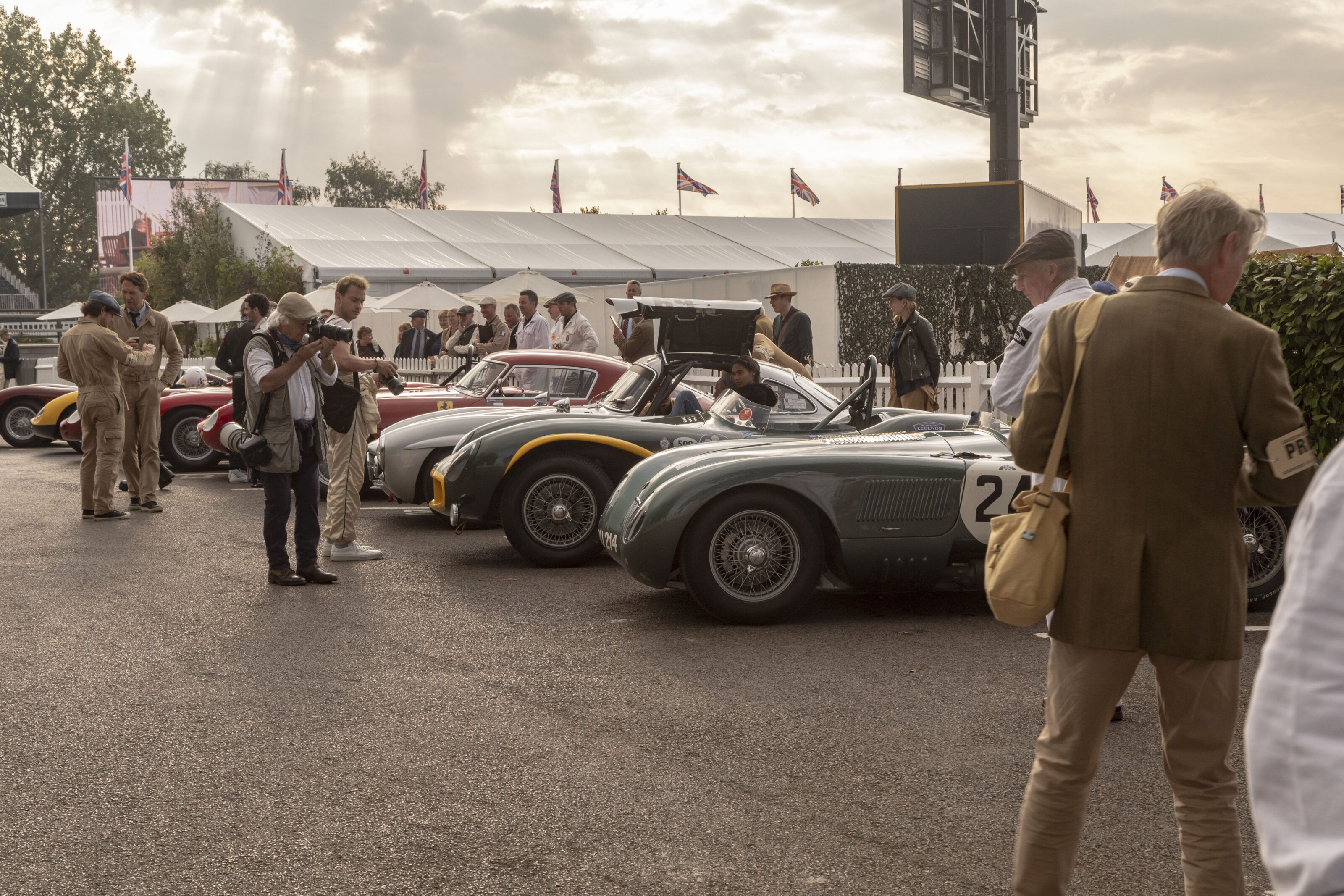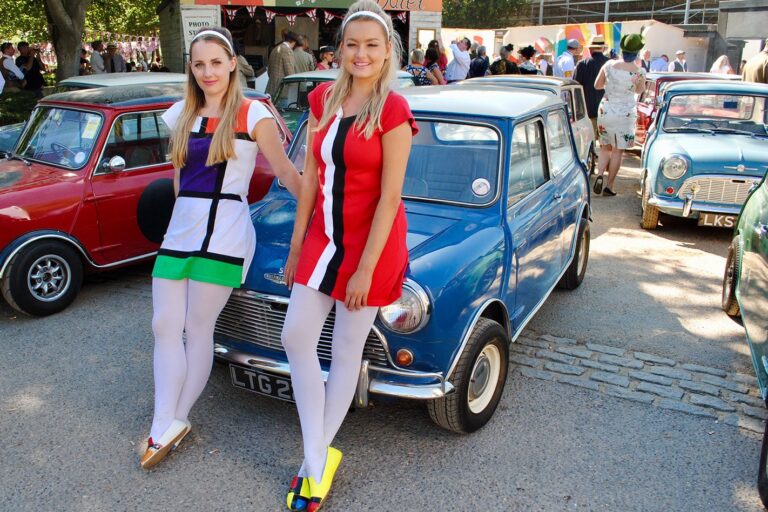It’s like you’ve fallen through a crack in the space/time continuum. Here is an oil-streaked blower Bentley, over there the pair of gorgeous dark blue Ferrari 250 SWBs once driven by Stirling Moss. In between, everything from a brace of grimy, hard-worked Aston Martin Ulsters from the 1930s to a swarm of Mini Coopers from the 1960s to four 1950s BRM grand prix cars powered by a screaming 1.5-litre supercharged V16.
Oh look… There’s Ford boss Jim Farley climbing into his stunning 1966 GT40, getting ready to race. And here’s Jenson Button, slightly wide-eyed, describing what it’s like to get wheelspin at 160km/h in third gear in a 1964 AC Cobra. The crowd is dressed in everything from 1940s military kit to 1960s hippy gear. Spitfires are parked everywhere. Olive-coloured WW2 Jeeps bustle around the infield.
Yep, the Goodwood Revival is an utterly extraordinary experience. Here’s a glimpse of an event that, if you haven’t been, deserves to be on top of your bucket list.
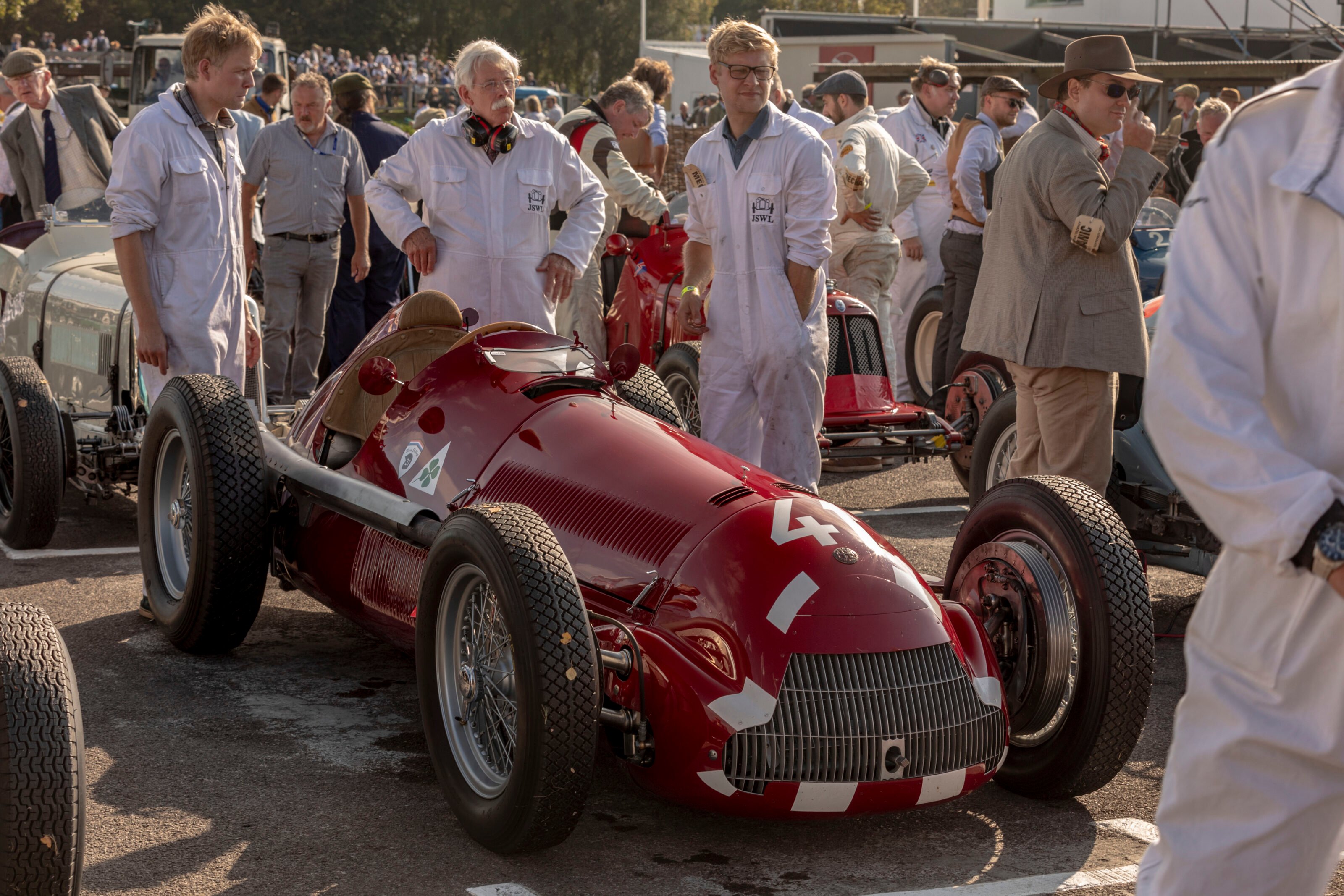
This 1938 Alfa Romeo 158 Alfetta is powered by a supercharged twin-cam 1.5-litre straight-eight making 145kW. During World War II Alfa hid its 158s from the occupying German forces.
In 1950 the 158, its power boosted to 261kW courtesy of two twin-stage superchargers, took Guiseppe Farina to the first-ever Formula 1 world driver’s championship.

Like Australians, the Brits have long enjoyed touring car racing. The diverse field for the St Mary’s Trophy Part 1 comprised cars built between 1950 and 1959, among them the ubiquitous Jaguar MkII – a winning car back in the day. And the drivers were just as diverse, too – the little Austin A35 leading this bunch was shared between Pink Floyd drummer Nick Mason and Mario Franchitti, brother of Indy 500 winner Dario.

One of the highlights of the weekend was the tribute to the legendary Stirling Moss, who died last year aged 90, featuring a parade of cars he’d driven during his career. Fast and versatile – racing F1 one weekend, sportscars the next, and competing in rallies and hill climbs – Moss drove some cool machinery, but none more beautiful than the Rob Walker Ferrari 250 GT SWB he raced right here at Goodwood six decades ago.
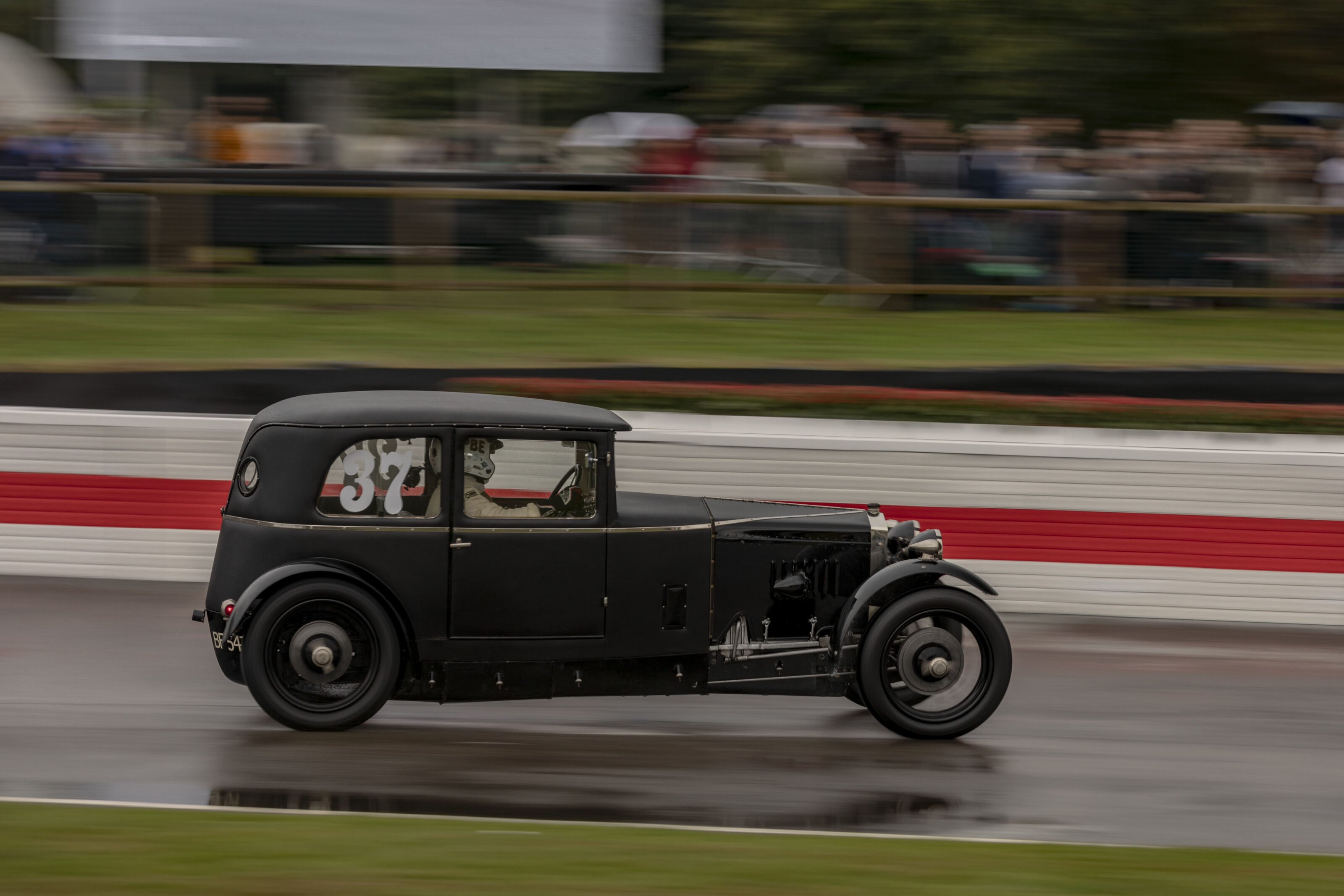
One of the biggest crowd pleasers on the track all weekend was this oddball – an exact copy of the Frazer Nash Saloon known as The Owlet built as a factory race car for the 1928 Tourist Trophy, a race first held in 1905.
Driver Patrick Blakeney-Edwards had the little Frazer Nash, with its potent 1.5-litre racing engine and chain-driven solid rear axle, sideways through every corner on the 3.8km Goodwood Circuit. Blakeney-Edwards won the race, too, beating cars like eight-cylinder Alfa Romeos and Maseratis.

Aircraft are a big part of Goodwood’s heritage. The Goodwood Circuit was laid out in 1948 around the perimeter of what had been the World War II Westhampnett airfield on the Goodwood Estate.
The idea was suggested to Freddie March, a racing driver and aeronautical engineer who also happened to be the 9th Duke of Richmond and the Goodwood Estate’s owner, by Australian racing driver Tony Gaze, who had flown Spitfires from here during the Battle of Britain.

Flat caps, white overalls and treaded racing tyres. Squint, and it could be 1955 as this Mercedes-Benz Gullwing makes its way through the paddock to the formation area for the Freddie March Memorial Trophy race.
The Goodwood Revival spectators, mostly dressed in period clothes, take the event as seriously as the racers. Freddie March was the grandfather of Goodwood Festival of Speed and Goodwood Revival founder Charles March, who is now the 11th Duke.
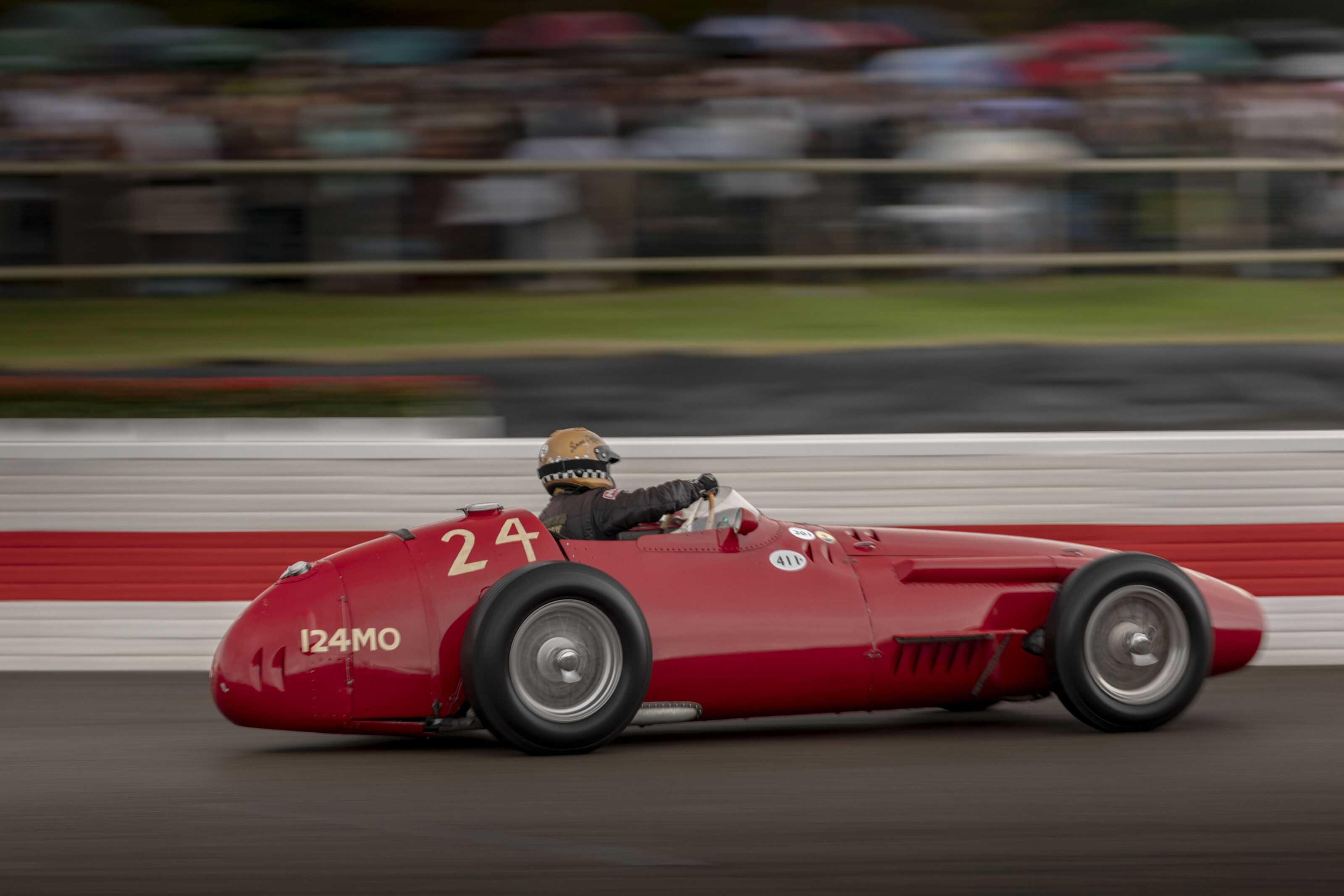
Regarded by many as the best-looking front-engined Formula 1 car, the 2.5-litre V12 Maserati 250F enjoyed a remarkable career as a front-line racer. Of the 26 built, Juan Manuel Fangio drove one to victory in the 1954 Argentine GP, the car’s first-ever race, before joining Mercedes-Benz.
Then, in 1957, after Mercedes had withdrawn from motorsport, he dove another 250F to his fourth and final world championship. In between, in 1956, Stirling Moss won both the Monaco and Italian GPs in 250Fs.
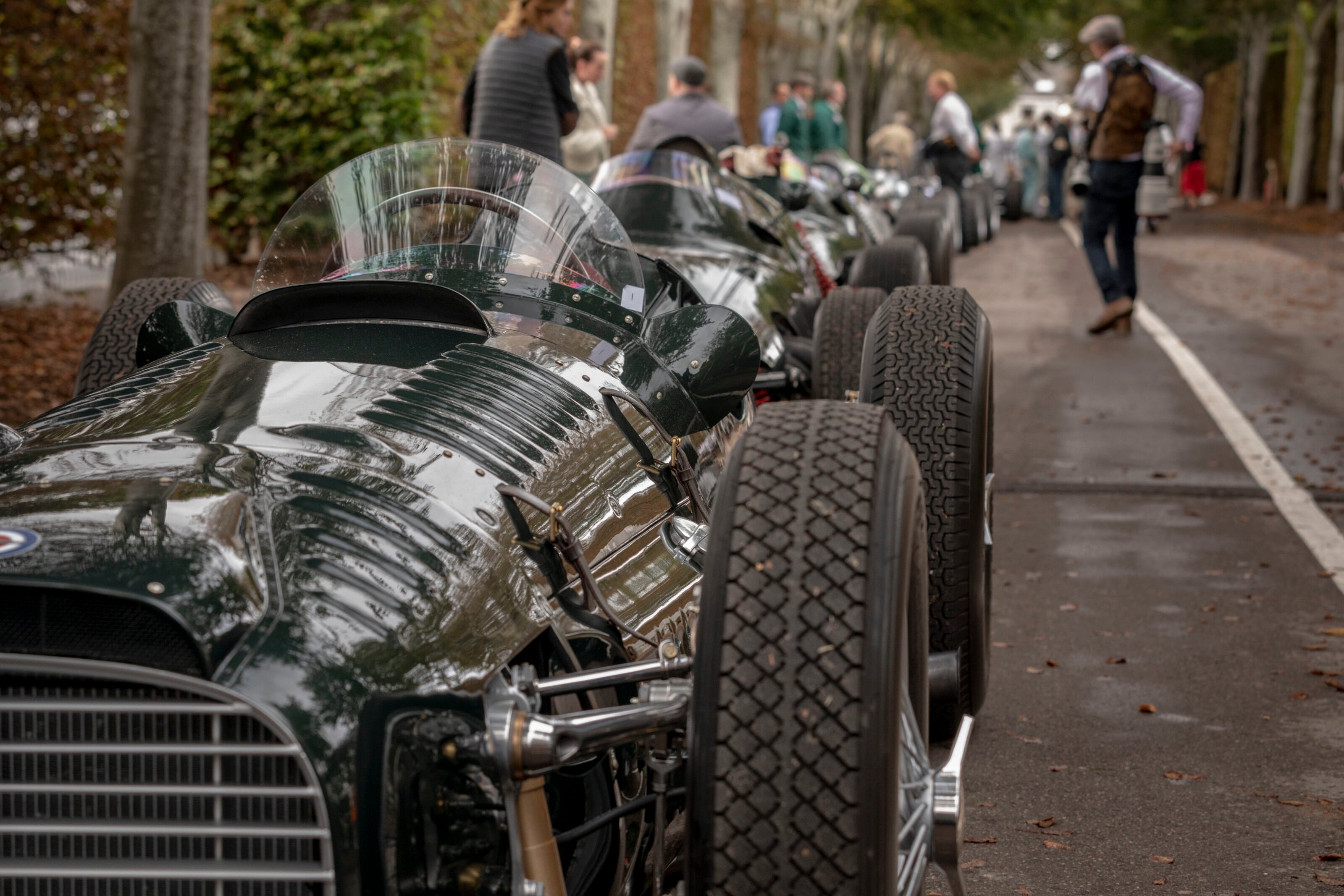
One of the featured marques at Goodwood this year was BRM – British Racing Motors – founded just after World War II. Leading this line-up of BRMs is its first car, the extraordinary Type 15 that made its F1 debut 70 years ago in the 1951 British GP at Silverstone.
The Type 15 was powered by a 1.5-litre supercharged, quad-cam V16 that revved to 12,000rpm. Not surprisingly, it proved chronically unreliable.

BRM seemed to enjoy making fiendishly complex racing engines. This is the 3.0-litre H16 – basically two 1.5-litre flat-8s, one stacked atop the other with their crankshafts geared together – that powered the BRM P83 driven by Jackie Stewart and Graham Hill, and this Lotus-BRM 43 driven by Jim Clark to the engine’s only Formula 1 victory in the 1966 US GP at Watkins Glen.
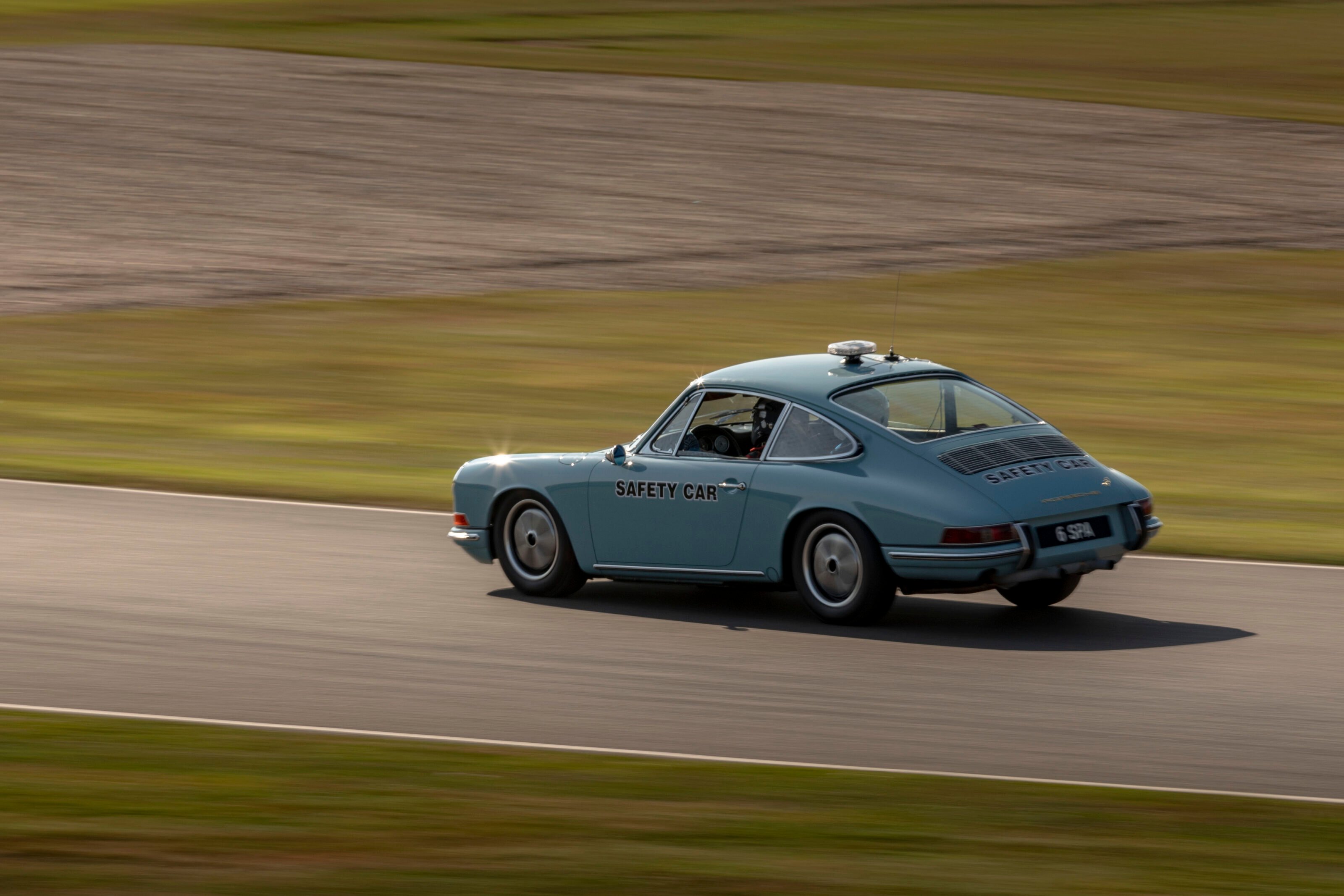
As Goodwood operated as a regular racetrack from 1948 to 1968, before being restored and reopened by Charles March in 1998, the Revival weekend focuses on cars from that era. And that focus includes even the official vehicles, such as the safety car, this lovely 1968 Porsche 911.
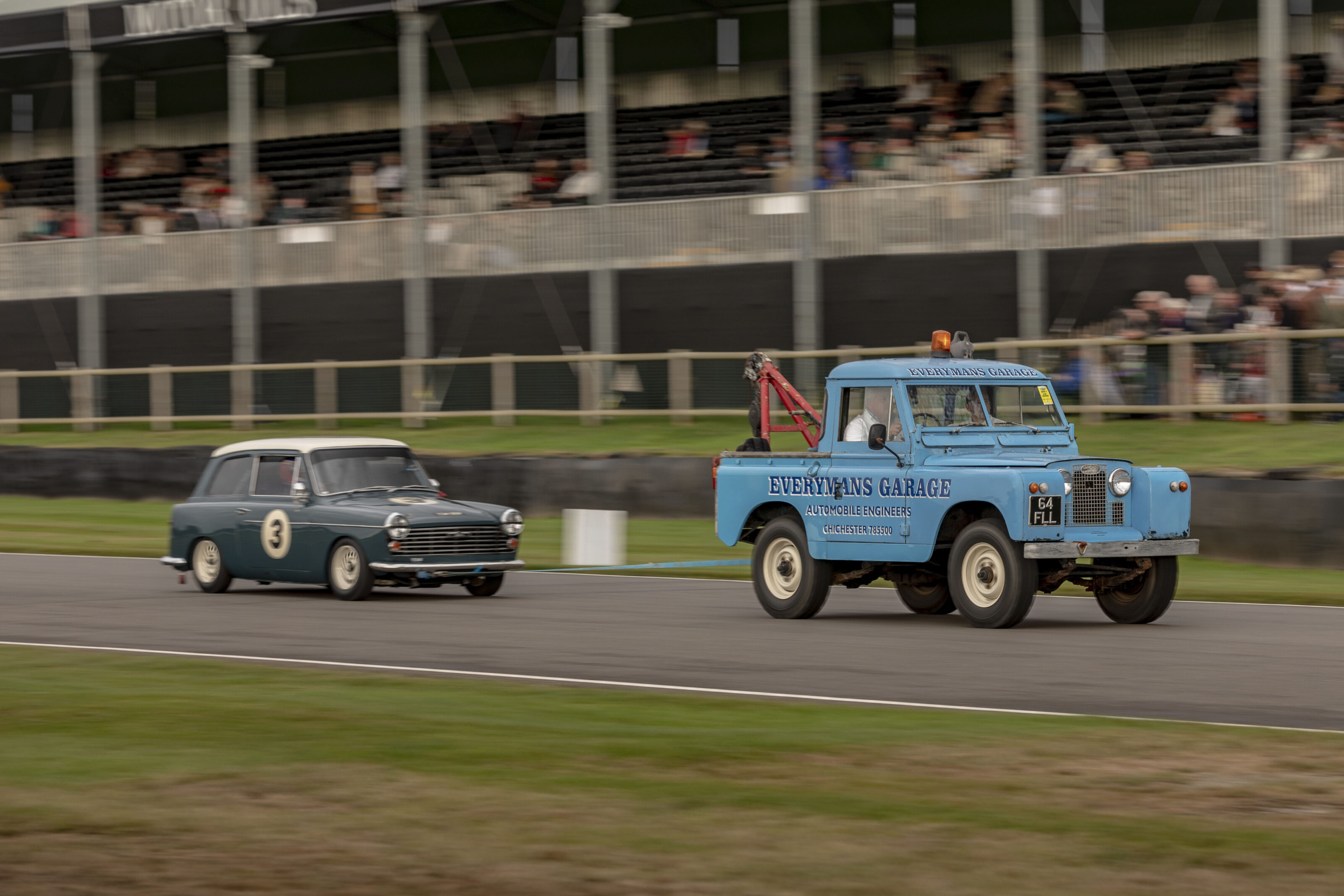
And what happens when your 1960s race car breaks down at the Revival? You get a 1960s recovery vehicle to tow you back to the pits, of course, in this case, a short-wheelbase Series II Land Rover.
The Austin A40 at the end of the tow rope was driven by former F1 and Formula E driver Jean-Éric Vergne.

Not all the interesting cars at the Goodwood Revival are on the track. And they’re not all British and European exotics. This line-up of American iron, with a pair of 1949 Cadillacs in the foreground, included a ’49 Ford Custom and a rare 1956 Continental Mark II, at the time the most expensive American car ever sold.
The 1949 Cadillac was American magazine MotorTrend’s inaugural Car of the Year. Wheels editor Bill Tuckey borrowed the idea for Australia in 1963; the Wheels COTY is the second-oldest award of its type in the world.
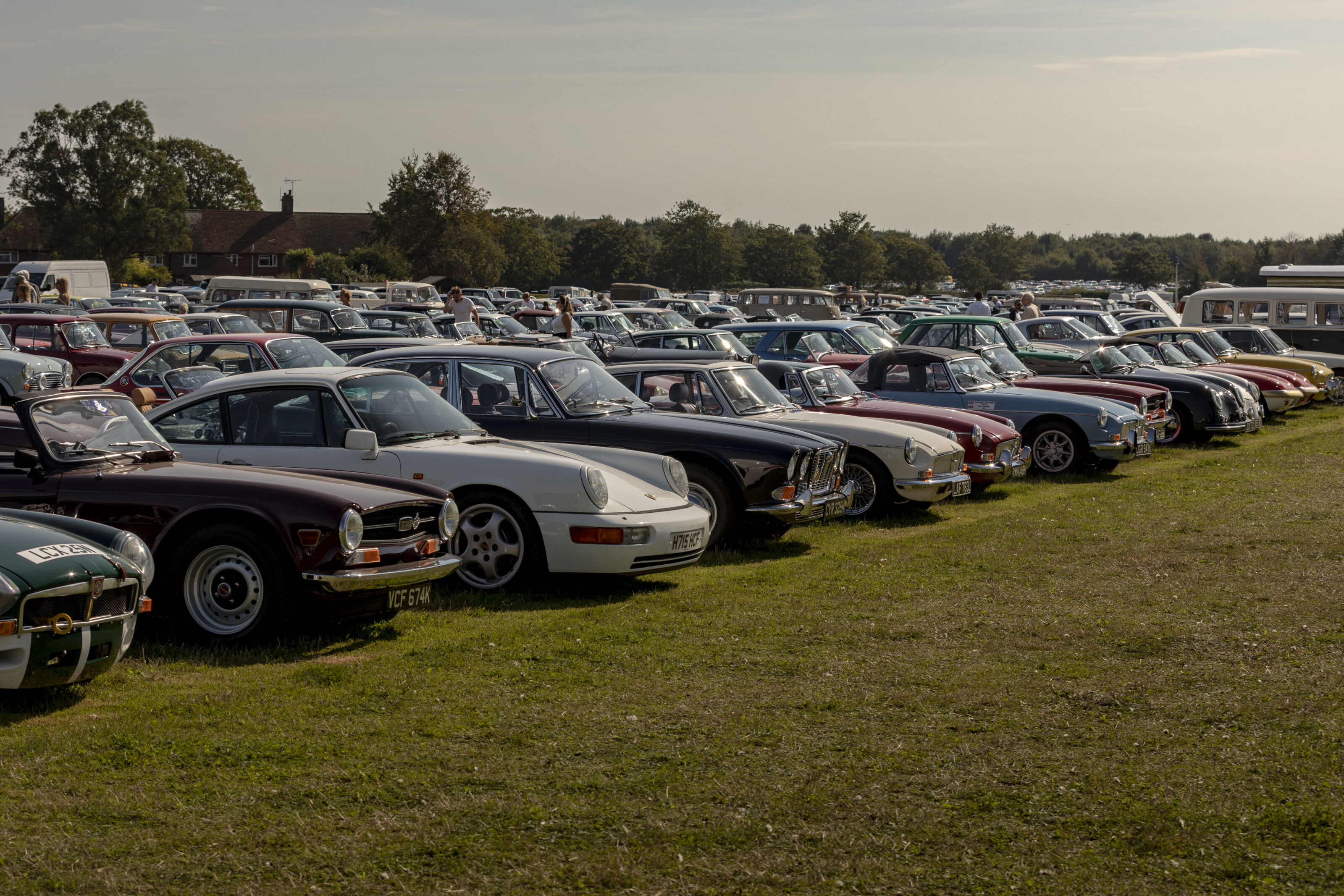
Even the car park at the Goodwood Revival is worth a look. The front row alone has a fascinating mix: MGBs, Triumphs, a Series I Jaguar XJ6, and in the distance a pair of Porsche 356 Speedsters next to a pair of Lotus Elans in the red, gold and white that mimicked the Team Gold Leaf livery made famous by the Lotus 49 F1 car. And not everything’s exotic; look and you’ll see Minis and VW Kombis, too.
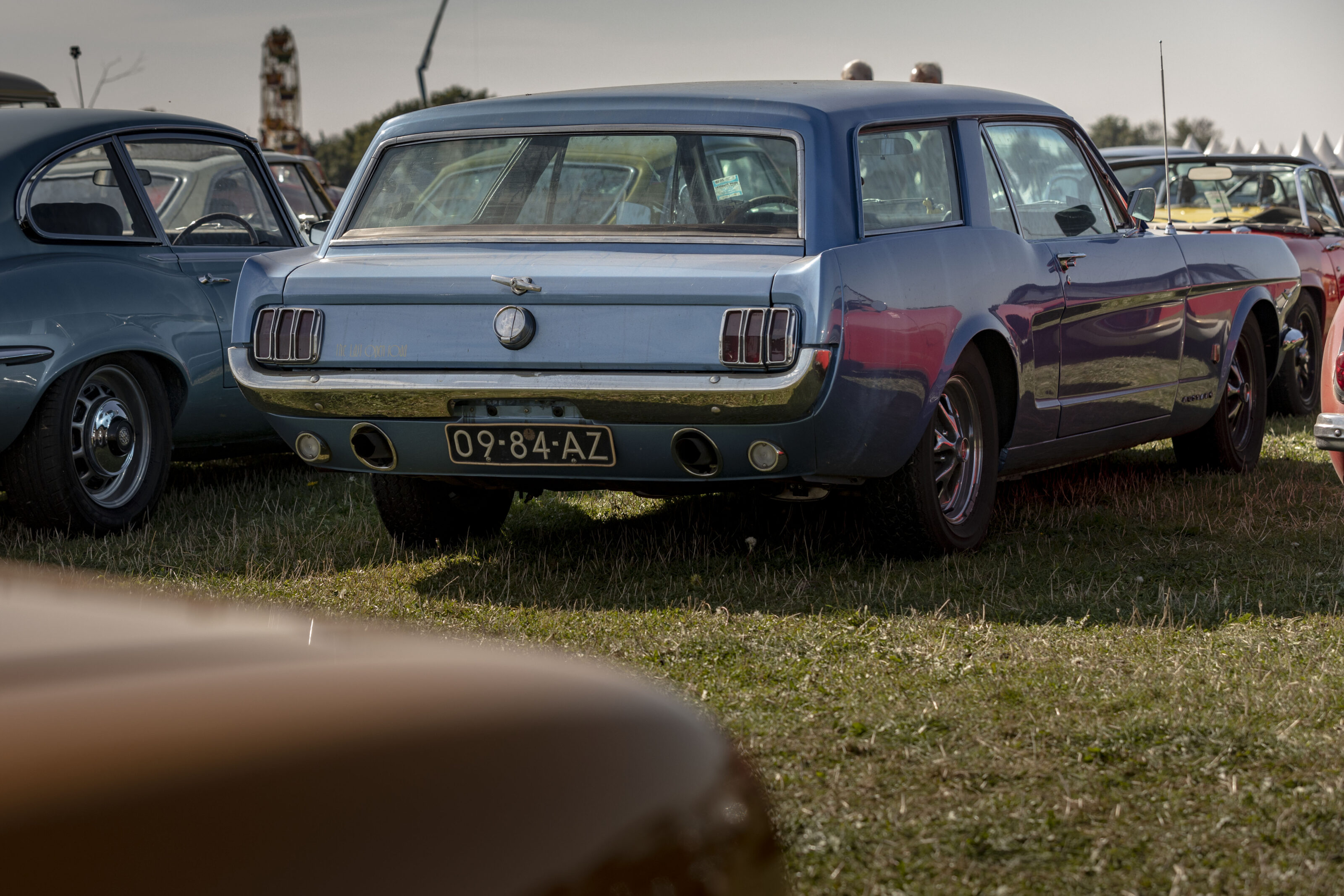
Possibly the rarest car in the car park is this 1965 Mustang wagon, regarded among Mustang enthusiasts as a near-mythical beast. One was designed by Robert Cumberford (later the automotive design critic for America’s Automobile magazine) and built in Turin by Intermeccanica.
The car was pitched to Ford as a possible production model, but senior management turned the idea down. Is this that car? No-one knows. A handful of replicas have been built over the years, and this is likely one of them.
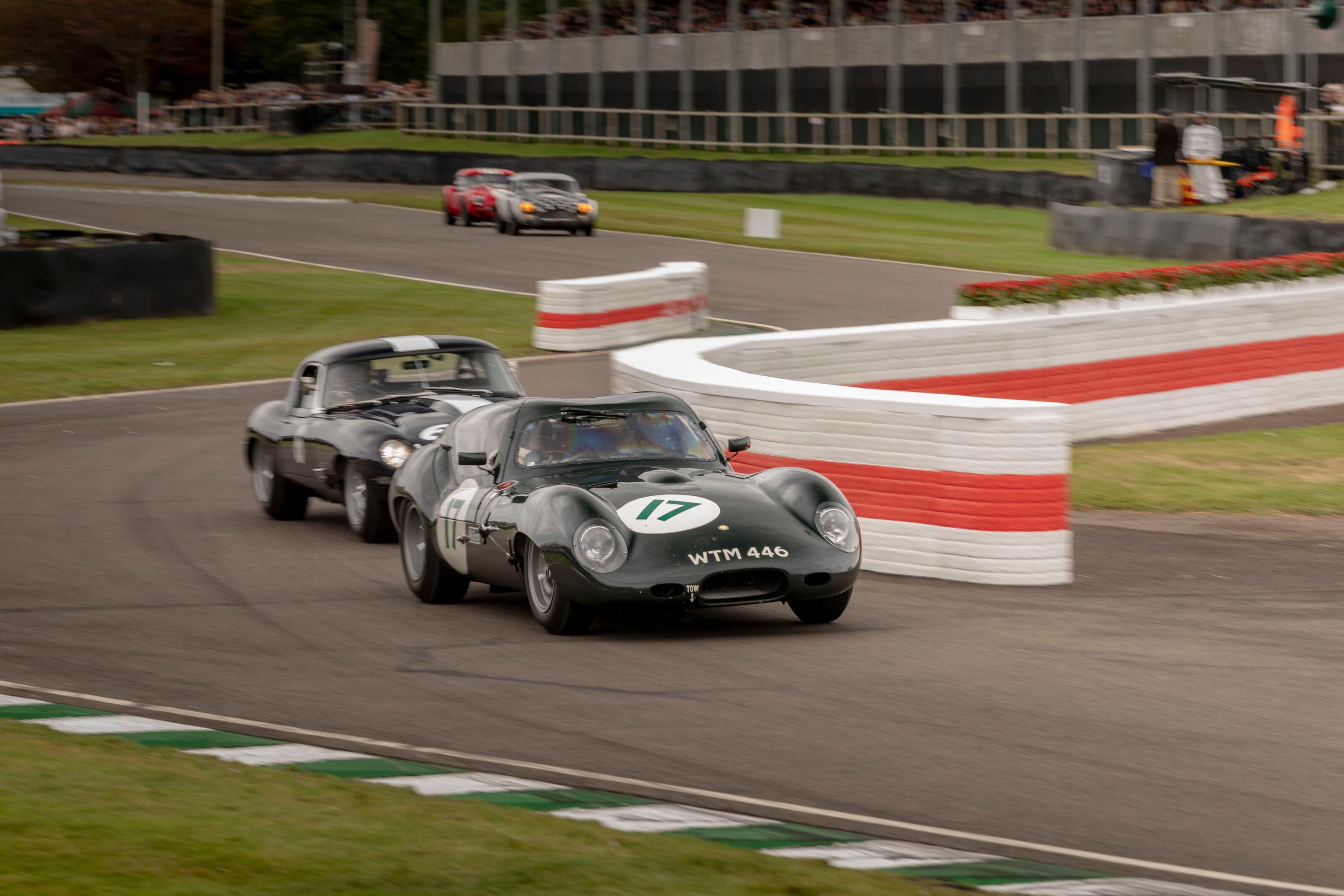
The Lister Jaguar coupe was designed in 1959 by aerodynamicist Frank Costin, who wrapped smooth, wind-cheating aluminium panels over a complex tube-steel spaceframe and a 3.8-litre Jaguar engine.
The car raced at Le Mans in 1963 but retired with engine failure after 29 laps. Even today it is a very quick beast, capable of 290km/h on a long straight.
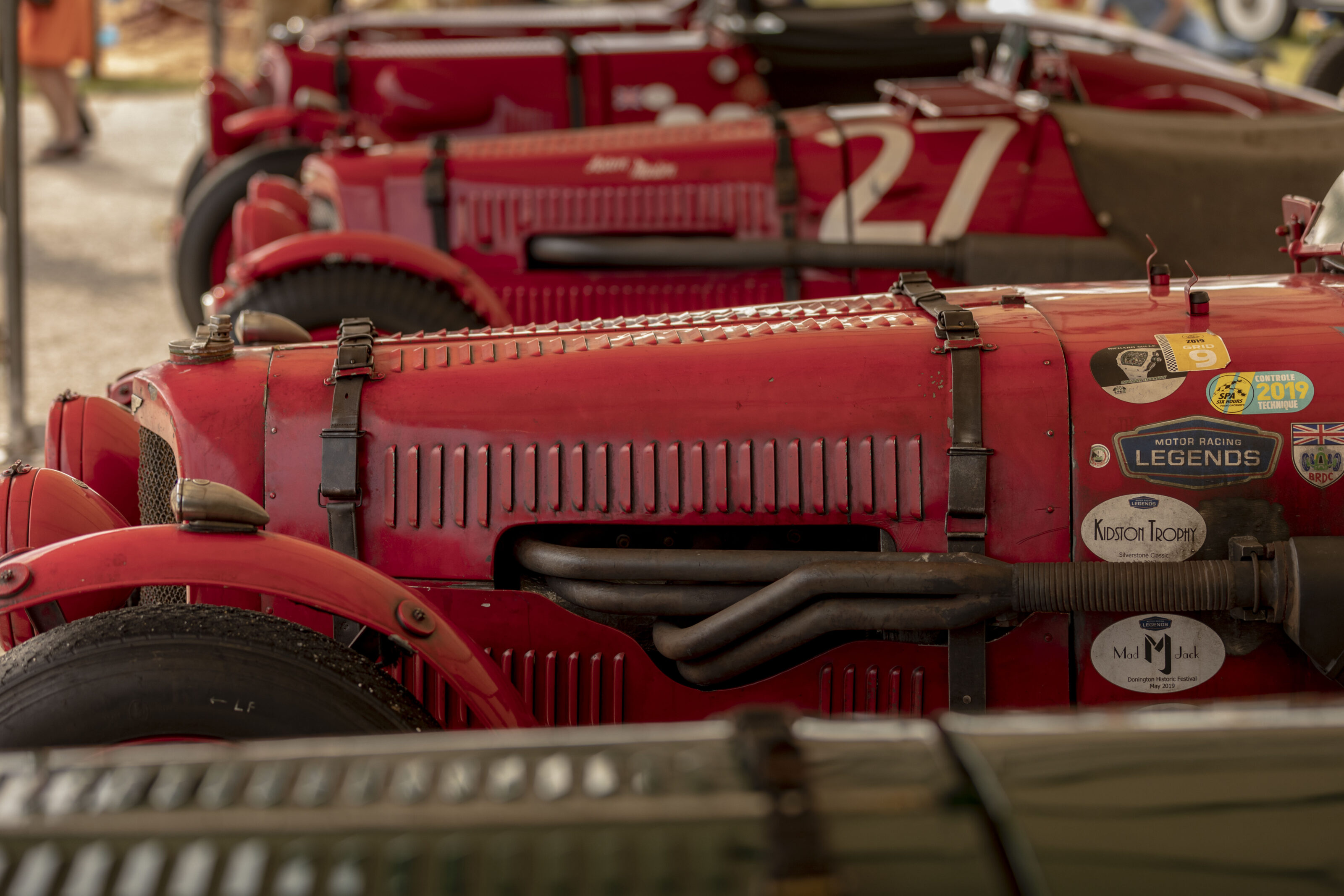
Two things to remember about the cars you see racing at the Goodwood Revival. First, they’re really racing. And second, they’re raced hard.
These mid-1930s Aston Martin Ulsters are worth between $3 million and $4 million each, but as you can see, they’re not treated with kid gloves.
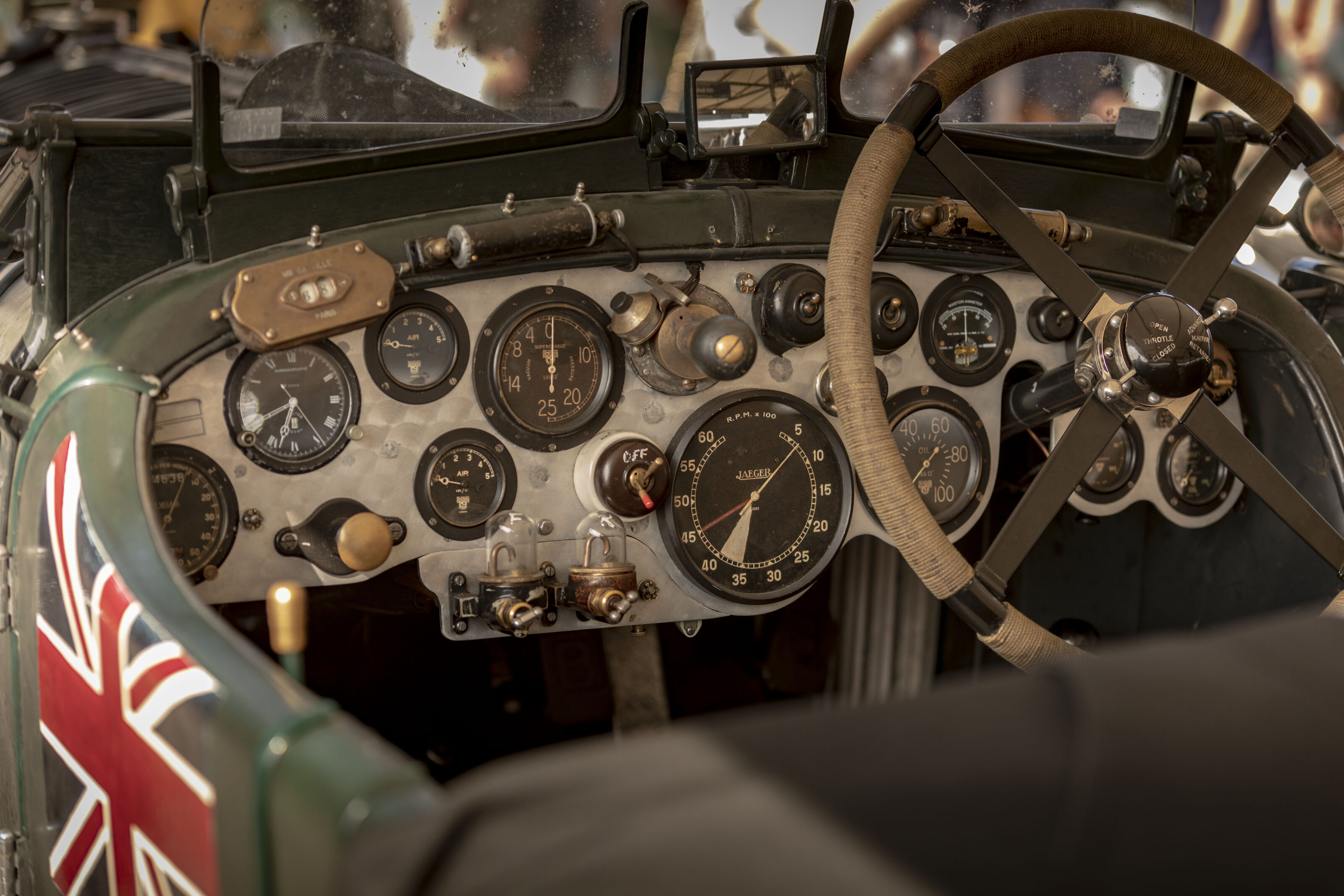
You think modern cars have dashboards with too much to look at? This is what Martin Overington has to keep an eye on while racing his 1929 Blower Bentley.
Overington once fitted a towbar to the car and used it to tow a Porsche 962 Le Mans racer from his home in England to a classic race in France, and back. He said the brakes on the trailer were drastically better than those on the Bentley, which made stopping ‘interesting’.
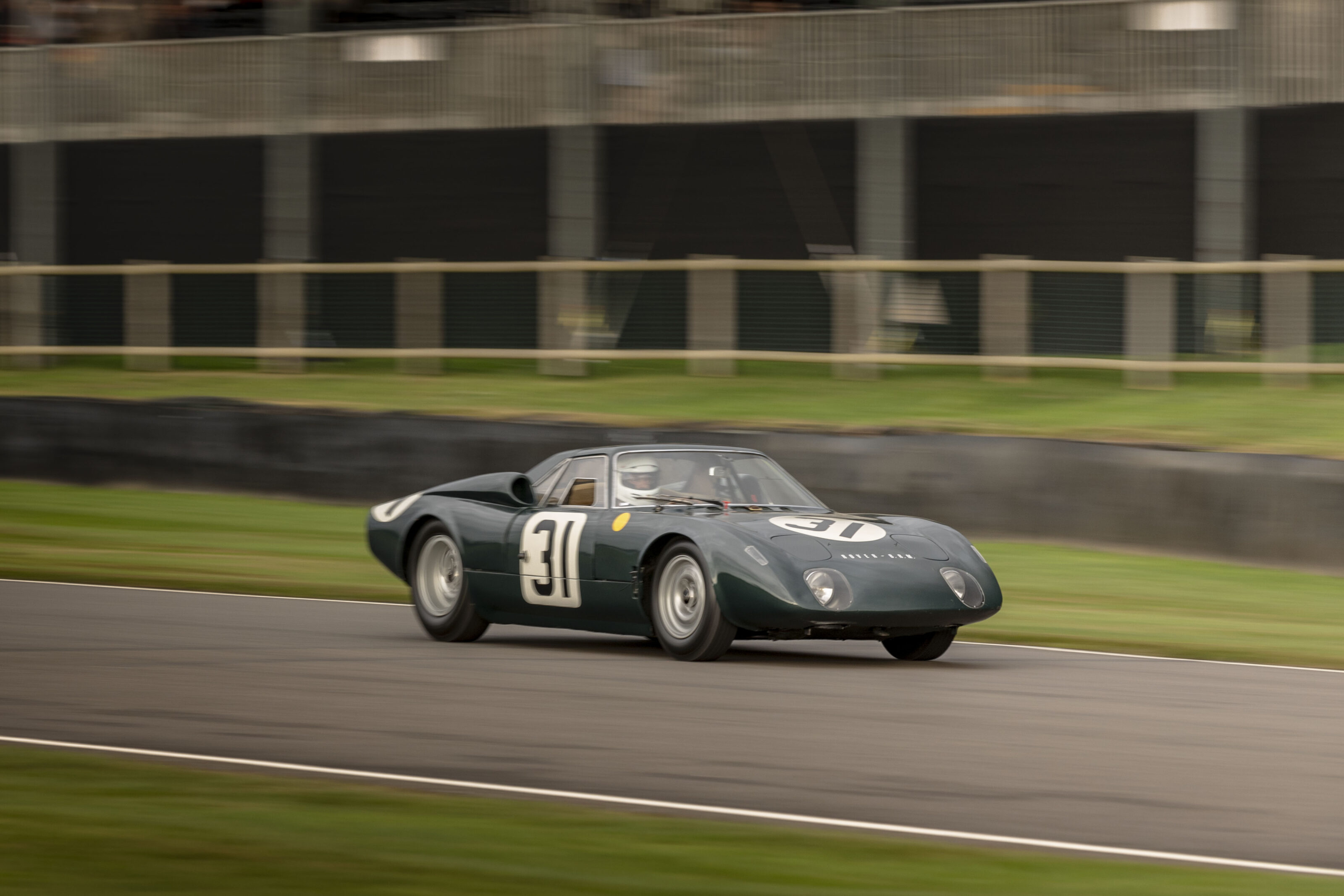
If the V16 and H16 BRMs weren’t ambitious enough, how about this, the Rover-BRM Turbine? Powered by a Rover gas turbine – the British manufacturer had been experimenting with the jet-age engine since 1950 – the car was built by BRM to race in a special class at Le Mans in 1963.
Driven by Graham Hill and American Richie Ginther, it reached the 3600km target set by organisers with hours to spare, hitting almost 250km/h on the Mulsanne Straight. Had it been included among the regular starters it would have finished eighth outright.

Even the kids get to join in the fun at the Goodwood Revival. The Settrington Cup is a race for youngsters in old Austin J40 pedal cars. Some 32,000 J40s were built between 1949 and 1971 by former miners in Wales, using surplus material from the Austin assembly line in Longbridge.
The cars were sold all around the world, and one was sent to Buckingham Palace for four-year-old Prince Charles. No fewer than 60 J40s lined up this year, the running order for the Le Mans-style sprint start drawn from a hat for the Saturday race and reversed for the Sunday race.

AC Cobras with the 4.8-litre Ford V8 are among the fastest cars around Goodwood, and so are highly sought after by those looking for a race win in the 60s sportscar class.
Among those behind the wheel of a Cobra at this year’s event were former F1 drivers Jenson Button, Martin Brundle and David Brabham, 2010 Le Mans winner Romain Dumas, and Aston Martin Valkyrie development driver Darren Turner.

And now for something completely different. Bill Shepherd’s 1959 Ford Thunderbird coupe was a real crowd-pleaser at Goodwood, winning both its touring car races.
Its giant 7.0-litre V8 gave it plenty of thrust on the straights, but as the race wore on, the brakes started to go away, allowing the little 1.6-litre Alfa Romeo Guiletta driven by journalist Dickie Meaden (third in this pic, behind the brown Austin Westminster) to get right alongside in the closing stages.

Passengers arriving at the Goodwood Revival by helicopter were shuttled to the infield terminal by a fleet of WW2 Jeeps, and Series I and Series II Land Rovers. This is a Willys-built Jeep. The trailer behind it was made by the American Bantam Company, the small Pennsylvania-based company that created the original Jeep prototype.
The US government decided tiny Bantam wouldn’t be able to build the 600,000 Jeeps it wanted, so awarded the contract to established carmakers Willys and Ford. As compensation, Bantam was given the contract to build 75,000 trailers.


